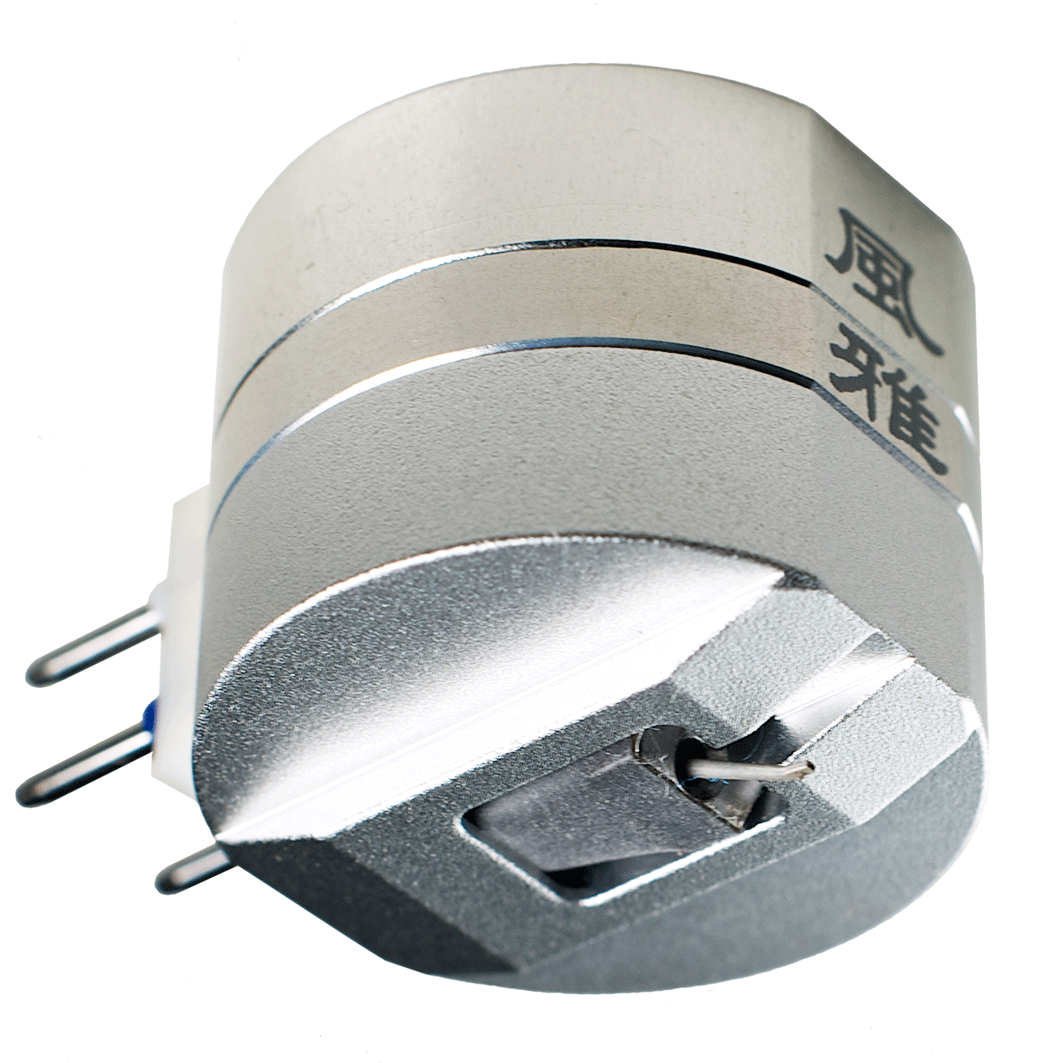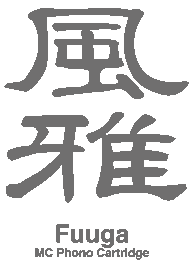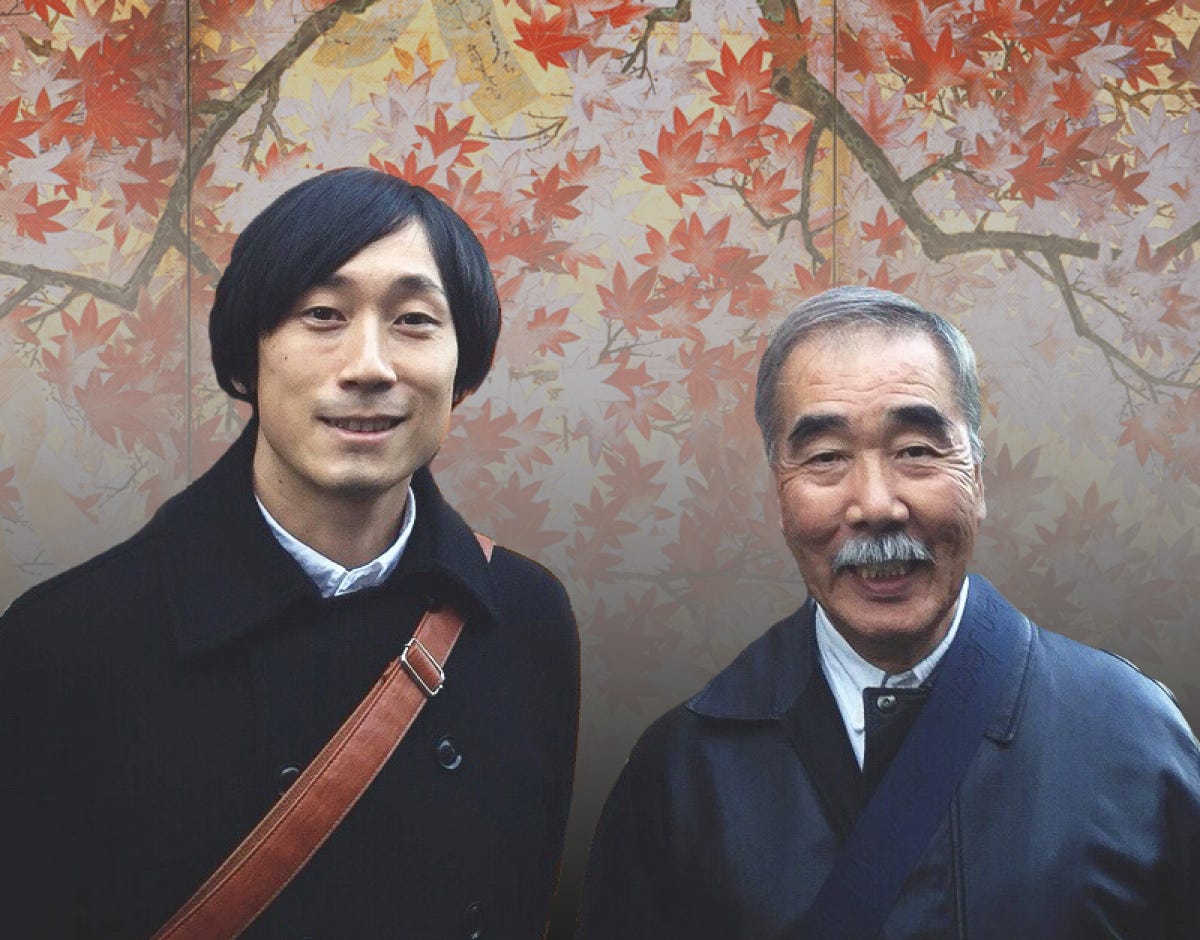
Specifications:
Output : 0.35 mVrms (50 mm/sec., zero to peak, 45°)
Impedance : 2.5 Ω (1kHz)
Cannel separation : >27 db (1kHz)
Compliance : 7 x 10-6 cm/dyne (100Hz)
Cantilever : A2017 Aluminum Aloy, tapered
Stylus : Parabolic Hybrid, 8μm x 40μm, pure diamond
Weight : 15 gram
Recommended tracking force : 2.0~2.2 gram

“This is simply the most engaging and satisfying cartridge I’ve come across in years: a future classic – now.” Roy Gregory
“This one’s a keeper. The Fuuga stays.” Roy Gregory
“There's just something about the Fuuga's balance that warms my heart. A lack of artificiality. An unfettered sense of dynamics. A massive soundstage. A lack of transient smearing. A simply outstanding midrange that brings vocalists to life.” Myles Astor
“Fuuga is, without a doubt, among the handful of highest-performing, most-enjoyable cartridges I have heard.” Michael Fremer
“There is no cartridge that is such a complete package on the highest level – It stays in my system.” Uwe Kirbach
“There are products you can’t wait to see the back of. There are products you miss as soon as they leave. Then there are the rarest products of all – those for which leaving simply isn’t an option.” Roy Gregory
“The real reason that this review has taken so long to write is the ease with which the Fuuga has insinuated itself into my system and become part of the landscape. Rather than reviewing or assessing, analyzing or dissecting its performance, I was simply enjoying it, using it as part of the musical framework against which other products were placed. It’s difficult to think of higher praise or a more emphatic recommendation than that.” Roy Gregory
“Its spectral balance is as neutral as that of any transducer I've experienced, and its transient performance satisfies on every musical genre and maintains its consistency from bottom to top.” Michael Fremer

Fuuga’s development was a story of two men’s passion and painstaking R&D which spans for nearly 3 years.
Osamu Nagao was a good friend of Miyabi designer, Haruo Takeda, and was Miyabi’s exclusive dealer in Japan. He has been an analog specialist since he started working in the industry over 30 years ago. He worked at Stax, Audio Craft, RF Enterprise, etc. He was one of the team member who created Black Widow tonearm with nude EMT cartridge combination which Harry Pearson raved about in the early days of The Absolute Sound. He’s also the one who introduced Mark Levinson to Takeda when Mark created Cello cartridge.
Miyabi was Takeda’s one man operation, and when he retired, he disappeared from the scene completely and there was nobody who succeeds the craft and secret of Miyabi cartridge. Missing the unique quality of Miyabi sound, Nagao decided to start a project to recreate Miyabi under his own company, Shuin-sha, and asked Tetsuya Sukehiro, a young cartridge designer who has been doing OEM works for several well-known brands, to join.
Sukehiro worked at a high-end audio OEM company for 10 years until he started his own studio in 2012. His specialty has been OEM/ODM of analog components, such as phono cartridges and tonearms.
The original idea was to reverse engineering Miyabi, but they soon found it almost impossible. Some materials Takeda used in Miyabi cartridges were no longer available and a unique method Takeda employed to support cantilever turned out to be a nightmare for a stable production.
So they were left with Miyabi’s basic materials and configuration. At this stage, they decided to forget about reverse engineering Miyabi and start developing ta new cartridge which sounds as dynamic and musical as Miyabi. It was easy for Sukehiro to create a clean sounding cartridge, but meeting Nagao’s demand was a challenge. Through the whole process, Nagao was the producer with a clear image of how it should sound and Sukehiro was the director who realized Nagao’s image.
When they started the project, Nagao insisted on using alnico magnet, thinking aluminum cantilever and alnico magnet combination is a major responsible factor for the Miyabi sound. However, that wasn’t enough at all, and Sukehiro’s struggle continued.
The first break through came in early 2014 when Sukehiro strengthened the rigidity of rear yoke structure. Sukehiro thought that, from its character, alnico magnet requires a large mass, and that could well be a contributing factor for a particular sound.
He machined out part of magnetic circuit from solid iron, which is usually assembled from several parts due to the difficulty of machining process. By making the mass large enough, it can also minimize the effect of the resonance of magnetic circuit over vibrating components.
At the same time, he changed alnico magnet to more powerful neodymium. There are many new elements he tried, some incorporated and some abandoned at this stage. To further strengthen the rigidity, the rear yoke was structurally incorporated as part of the body.
Nagao was finally happy with the result, but still the casing issue remained. After experimenting with different materials and shapes, they settled on three layers of different types of Dularumin, which gave the most neutral result.
“Miyabi” (雅) means “elegance” in Japanese. To honor the legacy of “Miyabi”, Nagao named it “Fuuga” (風雅), which means “elegance with flair”.

Tetsuya Sukehiro (left) and Osamu Nagao (right)
Copyright Konus Audio 2023- All Rights Reserved
